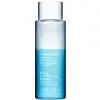What's inside
What's inside
 Key Ingredients
Key Ingredients

No key ingredients
 Benefits
Benefits

 Concerns
Concerns

 Ingredients Side-by-side
Ingredients Side-by-side

Water
Skin ConditioningC9-12 Alkane
SolventMethyl Trimethicone
Skin ConditioningButylene Glycol
HumectantPanthenol
Skin ConditioningGlycerin
HumectantSodium Chloride
MaskingPhenethyl Alcohol
MaskingParfum
MaskingPropanediol
SolventDisodium EDTA
Potassium Sorbate
PreservativeXanthan Gum
EmulsifyingTetrasodium EDTA
Centaurea Cyanus Flower Extract
AstringentGentiana Lutea Extract
EmollientDisodium Cocoyl Glutamate
CleansingSodium Cocoyl Glutamate
CleansingCI 42090
Cosmetic ColorantWater, C9-12 Alkane, Methyl Trimethicone, Butylene Glycol, Panthenol, Glycerin, Sodium Chloride, Phenethyl Alcohol, Parfum, Propanediol, Disodium EDTA, Potassium Sorbate, Xanthan Gum, Tetrasodium EDTA, Centaurea Cyanus Flower Extract, Gentiana Lutea Extract, Disodium Cocoyl Glutamate, Sodium Cocoyl Glutamate, CI 42090
Water
Skin ConditioningCyclopentasiloxane
EmollientCyclohexasiloxane
EmollientIsohexadecane
EmollientButylene Glycol
HumectantSodium Citrate
BufferingCitric Acid
BufferingBenzalkonium Chloride
AntimicrobialParfum
MaskingDisodium EDTA
Poloxamer 184
EmulsifyingBenzyl Alcohol
PerfumingCetrimonium Chloride
AntimicrobialDipotassium Glycyrrhizate
HumectantOryza Sativa Bran Extract
Skin ConditioningPhaseolus Radiatus Seed Extract
Skin ConditioningCitrus Aurantium Dulcis Fruit Extract
MaskingCarica Papaya Fruit Extract
Skin ConditioningCI 42090
Cosmetic ColorantWater, Cyclopentasiloxane, Cyclohexasiloxane, Isohexadecane, Butylene Glycol, Sodium Citrate, Citric Acid, Benzalkonium Chloride, Parfum, Disodium EDTA, Poloxamer 184, Benzyl Alcohol, Cetrimonium Chloride, Dipotassium Glycyrrhizate, Oryza Sativa Bran Extract, Phaseolus Radiatus Seed Extract, Citrus Aurantium Dulcis Fruit Extract, Carica Papaya Fruit Extract, CI 42090
 Reviews
Reviews

Ingredients Explained
These ingredients are found in both products.
Ingredients higher up in an ingredient list are typically present in a larger amount.
Butylene Glycol (or BG) is used within cosmetic products for a few different reasons:
Overall, Butylene Glycol is a safe and well-rounded ingredient that works well with other ingredients.
Though this ingredient works well with most skin types, some people with sensitive skin may experience a reaction such as allergic rashes, closed comedones, or itchiness.
Learn more about Butylene GlycolCi 42090 is a synthetic dye created from petroleum. It is used to give a bright blue color to cosmetics, medicine, and food.
Disodium EDTA plays a role in making products more stable by aiding other preservatives.
It is a chelating agent, meaning it neutralizes metal ions that may be found in a product.
Disodium EDTA is a salt of edetic acid and is found to be safe in cosmetic ingredients.
Learn more about Disodium EDTAParfum is a catch-all term for an ingredient or more that is used to give a scent to products.
Also called "fragrance", this ingredient can be a blend of hundreds of chemicals or plant oils. This means every product with "fragrance" or "parfum" in the ingredients list is a different mixture.
For instance, Habanolide is a proprietary trade name for a specific aroma chemical. When used as a fragrance ingredient in cosmetics, most aroma chemicals fall under the broad labeling category of “FRAGRANCE” or “PARFUM” according to EU and US regulations.
The term 'parfum' or 'fragrance' is not regulated in many countries. In many cases, it is up to the brand to define this term.
For instance, many brands choose to label themselves as "fragrance-free" because they are not using synthetic fragrances. However, their products may still contain ingredients such as essential oils that are considered a fragrance by INCI standards.
One example is Calendula flower extract. Calendula is an essential oil that still imparts a scent or 'fragrance'.
Depending on the blend, the ingredients in the mixture can cause allergies and sensitivities on the skin. Some ingredients that are known EU allergens include linalool and citronellol.
Parfum can also be used to mask or cover an unpleasant scent.
The bottom line is: not all fragrances/parfum/ingredients are created equally. If you are worried about fragrances, we recommend taking a closer look at an ingredient. And of course, we always recommend speaking with a professional.
Learn more about ParfumWater. It's the most common cosmetic ingredient of all. You'll usually see it at the top of ingredient lists, meaning that it makes up the largest part of the product.
So why is it so popular? Water most often acts as a solvent - this means that it helps dissolve other ingredients into the formulation.
You'll also recognize water as that liquid we all need to stay alive. If you see this, drink a glass of water. Stay hydrated!
Learn more about Water